Imalent DN70 Flashlight Review
Here’s the Imalent DN70, a flashlight that uses a dedomed Cree XHP70 emitter. The cell used is a 26650, and it’s included. Read on for more!
Official Specs and Features
Here’s a link to the Imalent DN70 flashlight product page.
Versions
Just one version, this one!
MSRP
Looks to be around $100 ($102 on Amazon at the time of writing). I’ve seen flash sales take it down as low as $57.99, though.
Short Review
I really like this one. The build, output, and charging are all great. At $58ish, I think it’s a great value.
Long Review
The Big Table
| Imalent DN70 | |
|---|---|
| Emitter: | Cree XHP70 |
| Price in USD at publication time: | $102 |
| Cell: | 1×26650 |
| Turbo Runtime | |
| LVP? | |
| Switch Type: | E-Switch |
| Quiescent Current (A): | ? |
| On-Board Charging? | Yes |
| Charge Port Type: | micro-USB |
| Chargetime | |
| Power off Charge Port with no Cell? | ? |
| Claimed Lumens (lm) | 3800 |
| Claimed Throw (m) | 325 |
| Candela (Calculated) in cd (at 30s) | 1470lux @ 4.178m = 25660cd |
| Throw (Calculated) (m) | 320.4 (98.6% of claim)^ |
| All my Imalent reviews! | |
^ Measurement disclaimer: Testing flashlights is my hobby. I use hobbyist-level equipment for testing, including some I made myself. Try not to get buried in the details of manufacturer specifications versus measurements recorded here; A certain amount of difference (say, 10 or 15%) is perfectly reasonable.
What’s Included

- Imalent DN70
- Spare o-rings (2)
- Charging cable
- Manual
- Nylon pouch with velcro closure and plastic D-ring.
Package and Manual
This light comes in a big cardboard box, with an Imalent seal of authenticity. As usual, Gearbest has its own inventory sticker on the box, but it doesn’t obscure anything.
Opening the package means folding back the flap cover, revealing the light and a box of goodies with the light.

The manual is an approximately letter-sized paper, with warranty, UI, runtimes, etc. It’s a very proper manual, without much extra.

Build Quality and Disassembly
Imalent did a great job with this light. It’s extremely well built and tough, and also quite attractive. The head has some fins (but not too many, and they aren’t very deep) but is mostly covered by the two buttons (separated by an information display screen) on one side, and a micro-USB charge port on the other. These items also add a bit of bulk to the head, but that’s also used in allowing a larger and deeper reflector. So overall a win, I’d say.
I’m a little perplexed by this awesome blue (anodized) tailcap. It looks like it should unscrew and that’s how one would swap the cell, but with some effort, I never made this unscrew. What that means is that the whole body tube must be unscrewed from the head in order to change the cell (if you don’t simply rely on the very good onboard charging, that is).

The downside of unscrewing that way is that the bezel itself isn’t thread-locked down, so one might accidentally unscrew the bezel instead of the tube… Fairly unlikely, but possible. Just make the tailcap unscrew! (Note: the manual does say to unscrew the body not the tailcap – so Imalent does seem to know and planned that the tailcap is not removable).
The threads on the body are anodized and square-cut, and very pleasant to utilize.
It’s also quite easy to get to the emitter in this light. The bezel unscrews easily, and the lens and reflector come right out. I did not unscrew the MCPCB, however, so I’m not sure how it’s held on the shelf in the head (that is, past the two obvious screws securing it.)
The head has only a brass button, and the tail has a beefy spring. But the light will still work with flat-top 26650s, and that’s what’s included here.
Size
The DN70 measures 113mm long, by 38mm (head)/32mm(tail). By no means the largest 26650 light on the market, and for one with charging, I think it probably is pretty small.
Here it is compared to the Lumintop SD26, another onboard charging 26650 light (though, not specifically in the same category as the DN70, since it’s more of a thrower than the DN70).
Apologies, I managed to not photograph this light with any bills for size reference!
Retention
Essentially the only option for carry with this light is the pouch. The pouch is quite nice, with stretchy sides that allow carry in an up or down position. And there’s a velcro belt attachment point, and a sturdy plastic ring, too.
There is no pocket clip or lanyard, or a place to attach either. And no magnet of course.
My carry of this light was limited to pocket carry, which worked but was … noticeable.
Power
The DN70 is powered by a single 26650. Imalent conveniently provides a “4500mAh” flat top cell. My testing (specifically the charge test) shows the capacity quite a bit higher than the rated 4500mAh, at approximately 5300mAh. That’s in line with the highest available capacity 26650s!! I am not sure if this cell has onboard protection or not, but the light itself seems to since the runtime terminated at almost exactly 3V.
In fact, the Turbo (3800lm) runtime terminated at 2.99V. Internal charging put the cell back at 4.19V (though it seems to read 4.05V max in all cases).1
Here’s a graph of the runtime on turbo. (There’s a slight hiccup at the beginning due to the light falling from the test apparatus.)
The variations in temperature are very likely due to the house ac coming on and off. I’m sorry to say that I currently don’t have a fan for doing cooled runtime tests (though I’m shopping for a good fan for this purpose.) Note that the light is temperature-controlled, but that’s a fairly high temperature to be controlled at. 55 degrees C is very warm to the touch. And when the light is at that temperature, the built-in display shows a “hot” symbol. The heat’s going to be fairly obvious if the light is in your hand, though….
The display will also warn once the cell begins to get low. The warnings start at 3.1V, and then the light will shut off at 3.0V.
Also, a feature of this light is onboard charging, via the port seen here:
Charging
This is a regular micro-USB port, and will charge non-Imalent brand 26650 cells as well as the Imalent-provided cell. Also, see the chart below:

The onboard charging is very good. Rock-solid 1A (+) charging. Also seems to get the cell quite “full” if you will, and then terminates charging with a cell voltage of 4.19V.
This is very good charging.
User Interface and Operation
There are two buttons on the DN70 for user input. One is a “Power Switch/Brightness Adjust” button, and one is a “Turbo/Mode” button.

The buttons are separated by a display that shows info such as mode (in lumens) and voltage. I did not find this display to be all that informative or useful, but I like its potential.
Operating the light will probably take a bit of practice since the buttons are so similar. In fact, the feel of them is also not dissimilar to the micro-USB cover, so it’s sometimes hard to find them without looking (or guessing).
From off, click the power button (right button). Hold the power button (short, 0.3s) to turn the light off. When the light is on, change the modes by clicking the power button. The modes cycle in the L>M>H direction. The light will come on in the last mode used (mode memory), excluding special modes.
To get to turbo, hold the left switch for 2s. It’s also a momentary turbo, but can be kept on by continuing to press the turbo for a couple more seconds. To get out of turbo, press the right button.
There are some strobe modes, too, which are accessed (and subsequently cycled) by double-clicking the left button.
I’ll be honest and say that the user interface is a bit of a mess in this light. It could be much better, and it doesn’t really even make sense, since the left button has such limited functions. But that could be a bonus – if you never need special modes, then all you’ll really need to use is the right button, which simplifies the user interface greatly for you. So in that sense, the user interface is a win.
Modes
| Mode | Mode Claimed Output (lm) | Claimed Runtime | Mode Measured Lux^ | Calculated Output (lm) | Measured Amps |
|---|---|---|---|---|---|
| Low | 20 | 50h | 1000 | 0.08A | |
| Mid | 300 | 6h | 6540 | 0.60A | |
| High | 2500 | 2h30m | 48900 | 3.11A | |
| Turbo | 3800 | 1h30m | 66800 | 4.13A |
^ This category basically meaningless since I don’t have a calibrated sphere. I’m still recording these values and working on calibration. They are useful in the sense that they give actual mode spacing information.
Standby is approximately 0.05mA.
I’m really disappointed that the lowest mode is 20 lumens. I don’t know if you have a reference point for 20 lumens, but I can tell you that 20 lumens is quite bright. It’s been said that a wall-o-light light like this doesn’t need a low mode, but I respectfully disagree (see: Meteor M43). Aside from that, the modes here are pretty good.
Note too that the drain on turbo is 4 Amps, which isn’t really trivial. Imalent recommends a high drain cell. And while 4A isn’t really in the “high drain” range of some lights, it’s still pretty high!
LED and Beam
The emitter of choice in the DN70 is a CREE XHP70. As I understand it, most XHP70 emitters have a dome, but this one does not. I’d say that makes it an XHP70 HI but there’s no official word on that. I’ll add that I confirmed with Imalent themselves, that this light is actually supposed to have no dome, and so what I got from GearBest wasn’t altered in that way.
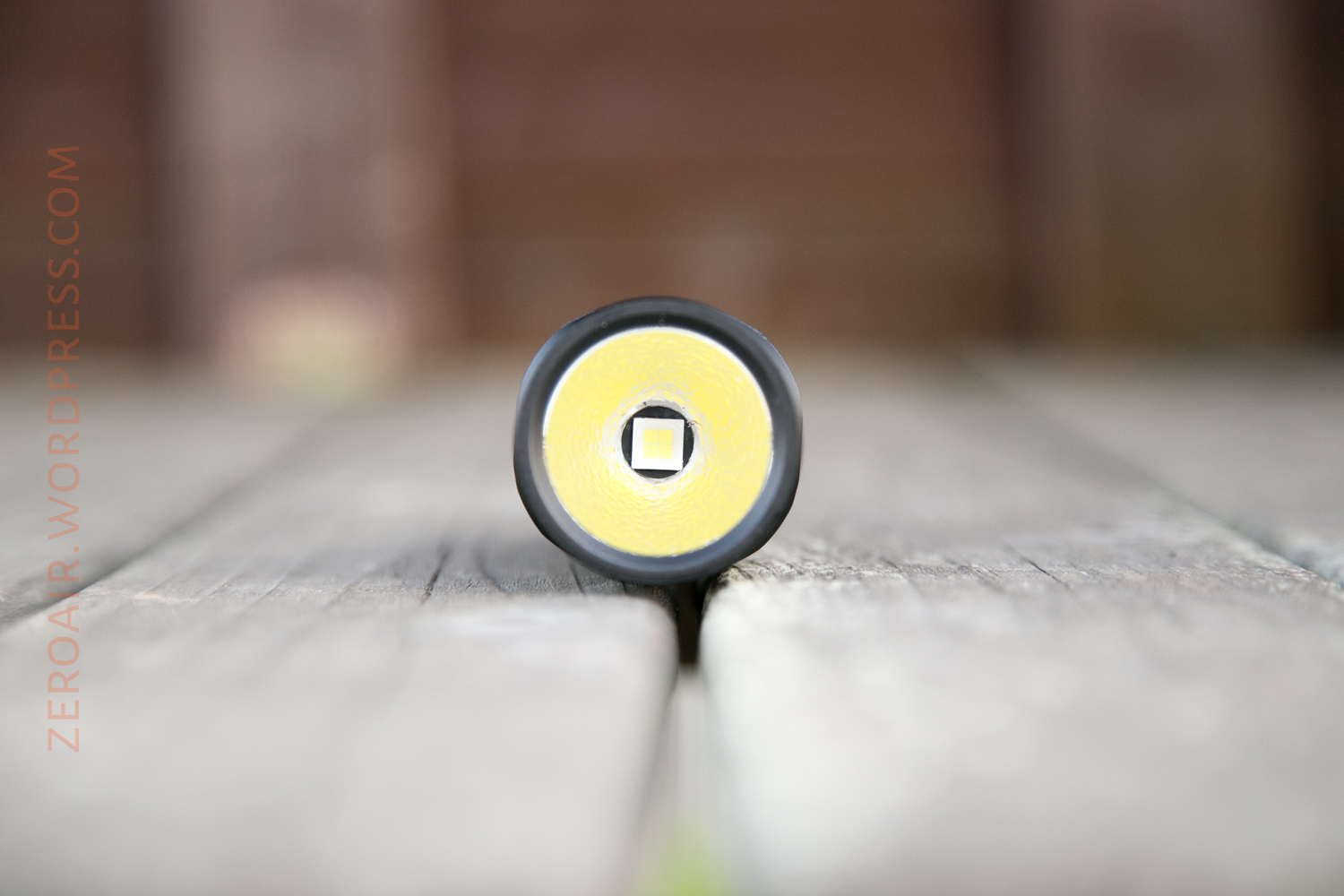
Does it make sense to have a domeless emitter in a light like this? With a shallow orange peel reflector – not intended for throw? I don’t know the answer to that, but I can say that I like the beam a lot. Anyone can probably pick up on the fact that I like domeless emitters (for no reason in particular).
The beam is good and does make a wall of light, but still has a very clear hot spot. I think the beam isn’t unlike the Convoy L6, actually.
Imalent didn’t mention a tint for this XHP70, but compared to the Nichia 219b, the beam is greenish. Not compared to the Nichia 219b (ie, in normal use) the tint is just fine.
These beamshots always have the following settings: f8, ISO100, 0.3s shutter, and manual 5000K exposure. These photos are taken at floor level, and the beam hits the ceiling around 9 feet away.
Conclusion
What I like
- Build quality is very good
- On-board charging is a nice plus (and it doesn’t require Imalent or proprietary cells!!)
- On-board charging is also very good!
- The user interface is a huge improvement from the other Imalent I handled.
What I don’t like
- I still think the switches can still improve.
- The readout could be more informative.
- The blue tailcap… seems like it should do something but in actuality just seems to be decorative.
- I’d like a lower low.
Notes
- This light was provided by GearBest for review. I was not paid to write this review.
- This content originally appeared at zeroair.org. Please visit there for the best experience!
- For flashlight-related patches, stickers, and gear, head over to PhotonPhreaks.com!
- Use my amazon.com referral link if you’re willing to help support making more reviews like this one!
- Please support me on Patreon! I deeply appreciate your support!








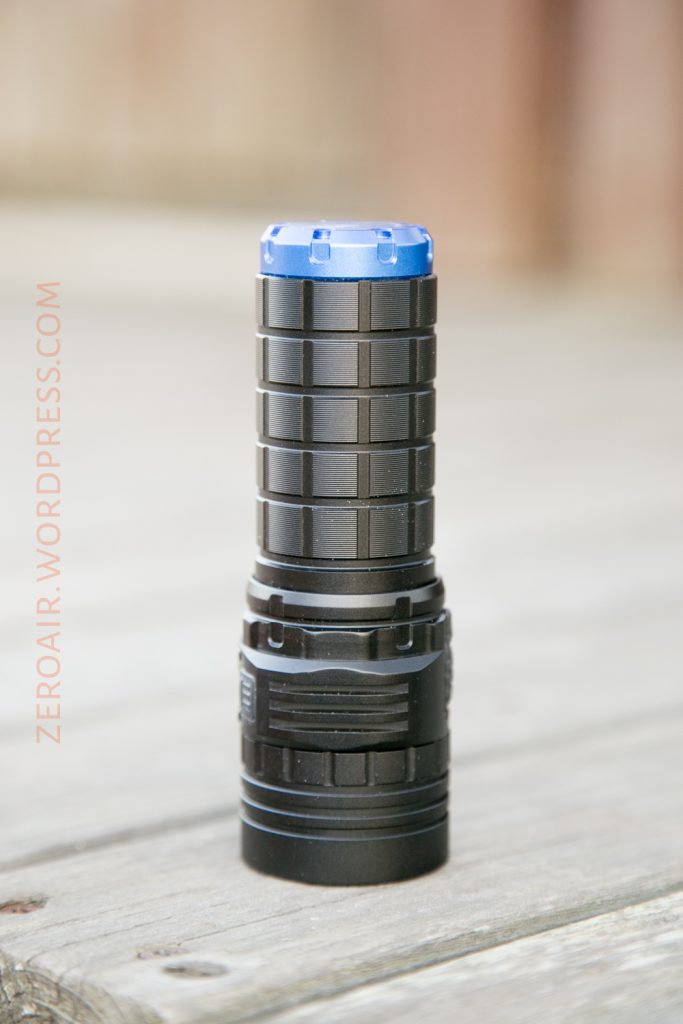



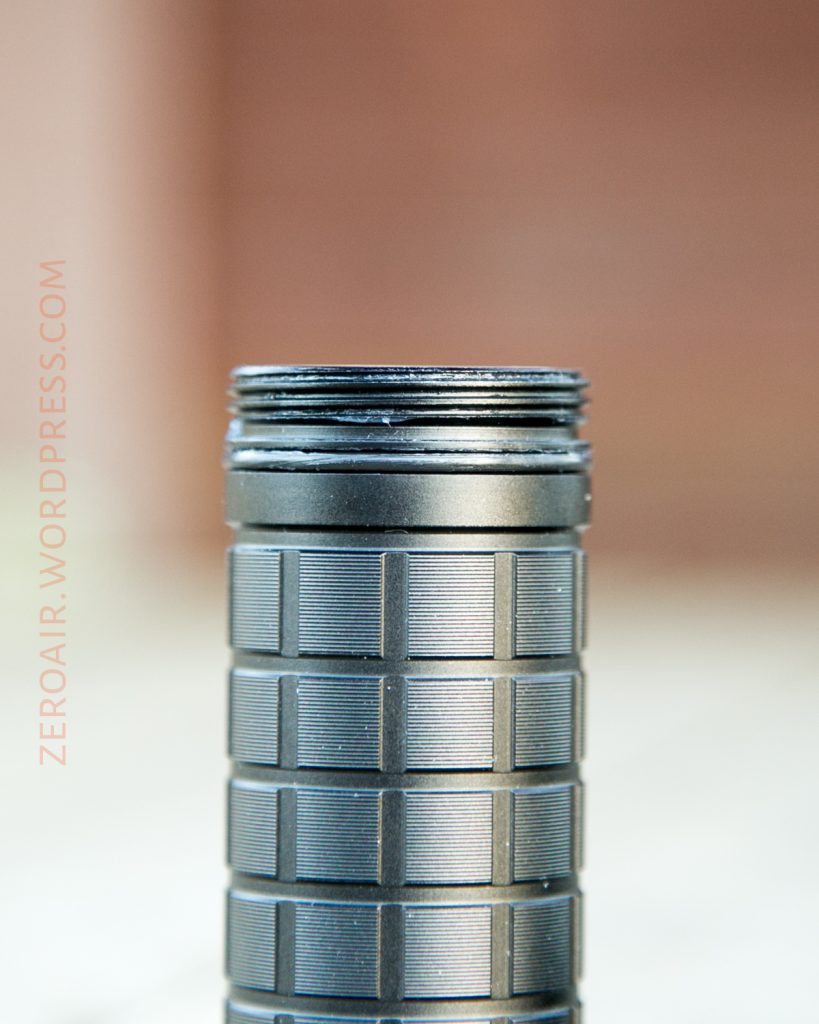



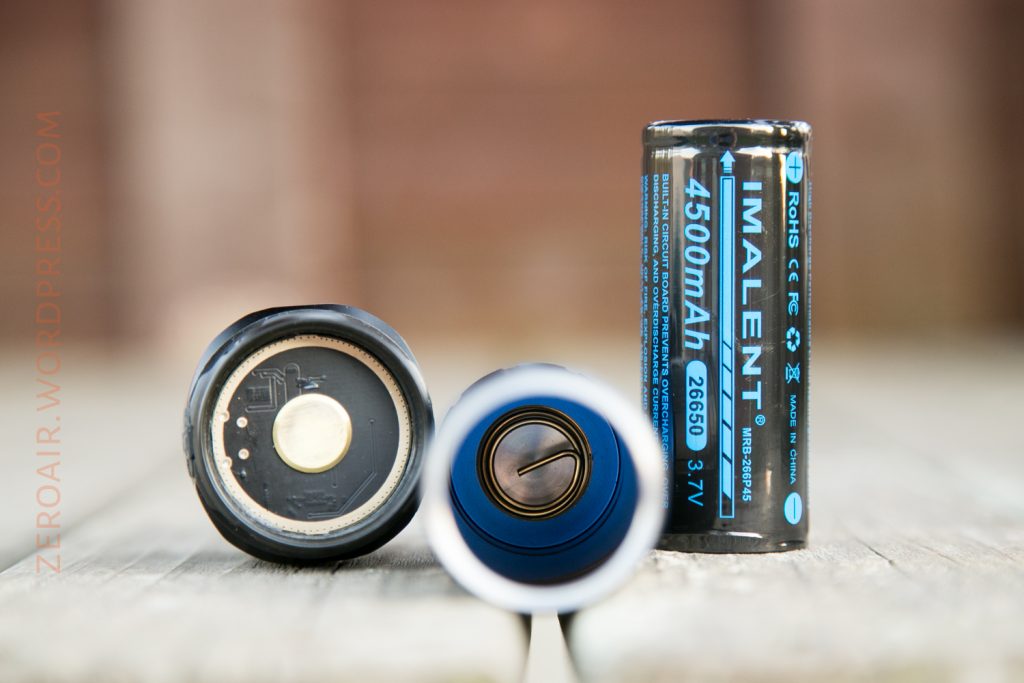






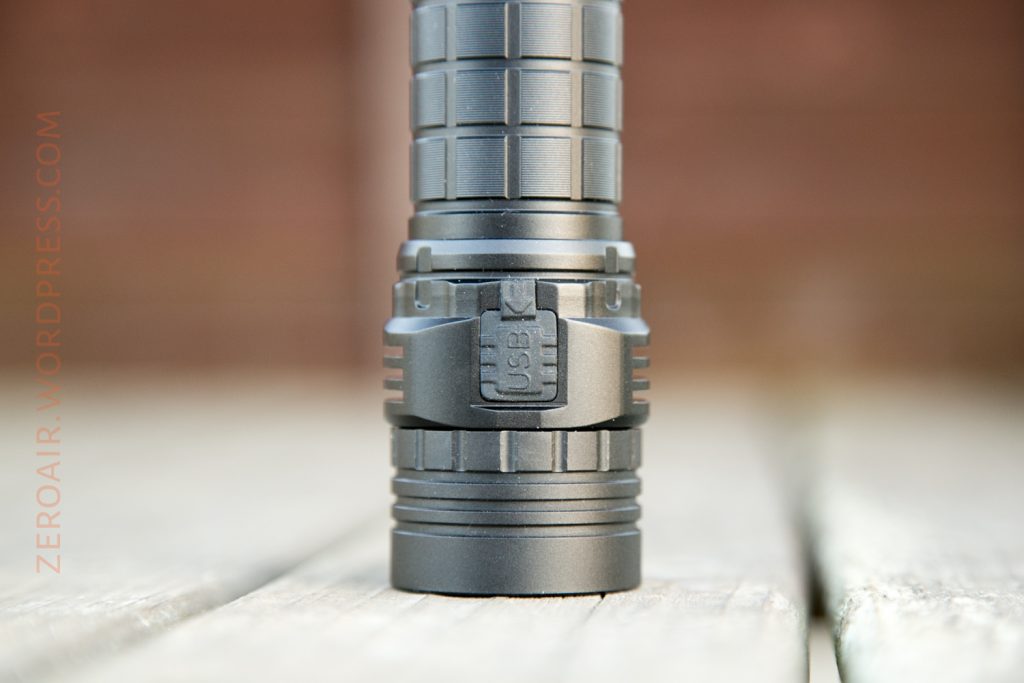

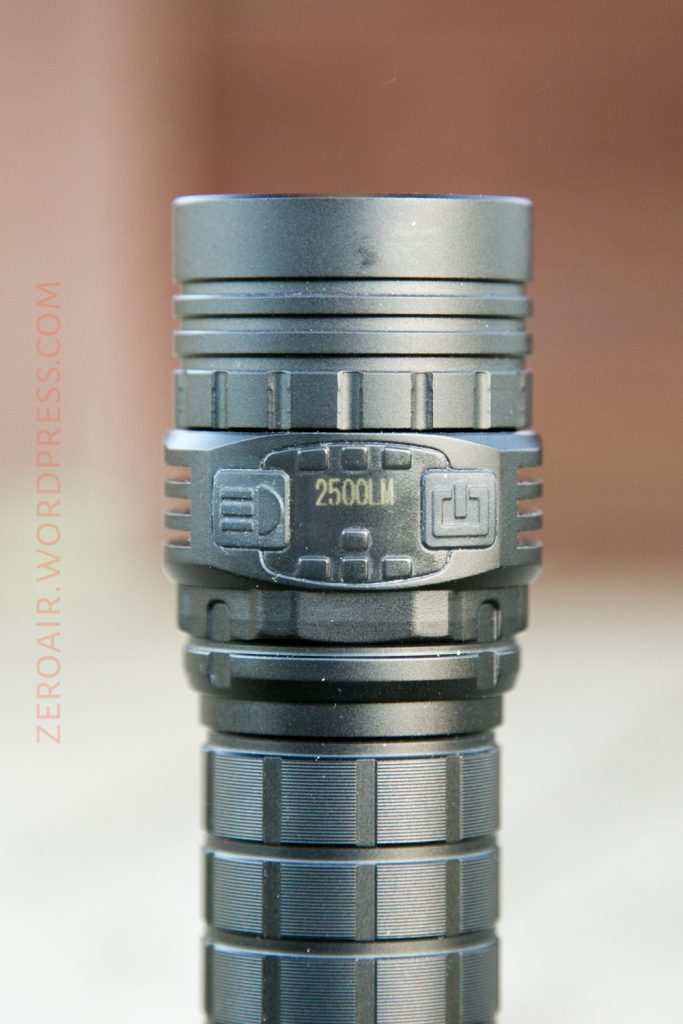
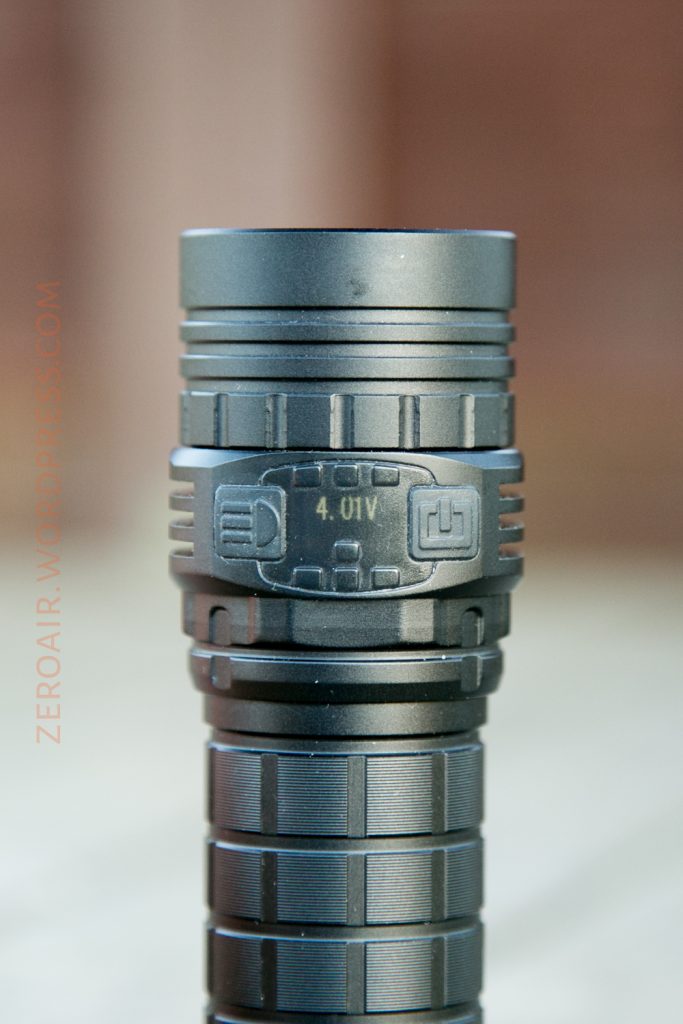






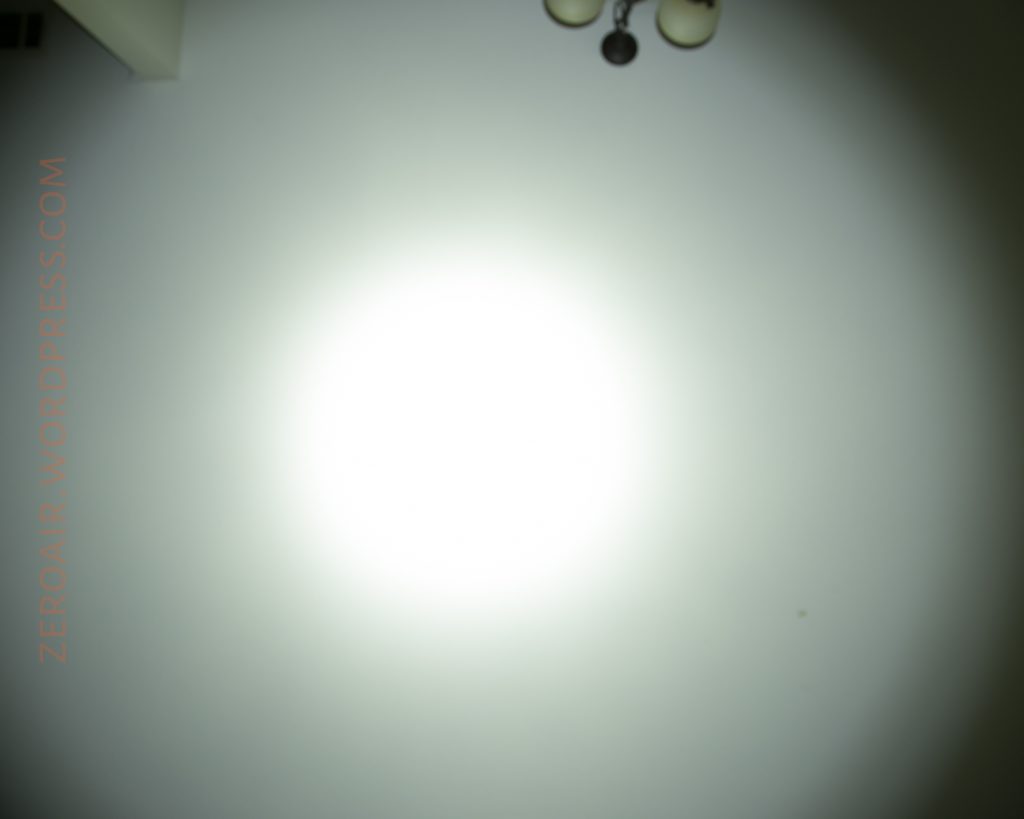
How did you come to the number of 4A power draw on turbo? And at what voltage did you mean 4A?
Lu, it’s current across the tailcap. So the voltage would be cell voltage.
how long does it last at 2500 lumens?
Sorry Harsha, that’s not something I tested. Probably somewhere between 2h30m and 6 hours.